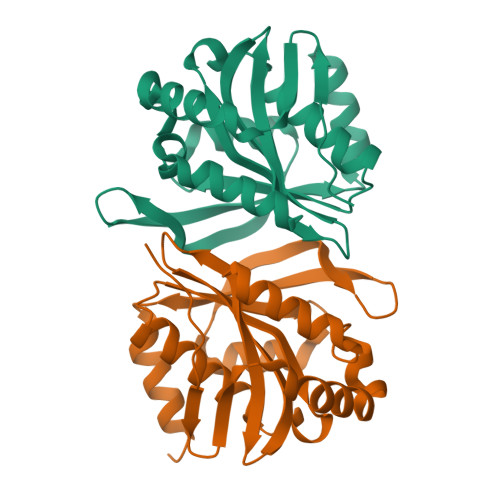The novel type II toxin-antitoxin PacTA modulates Pseudomonas aeruginosa iron homeostasis by obstructing the DNA-binding activity of Fur.
Song, Y., Zhang, S., Ye, Z., Song, Y., Chen, L., Tong, A., He, Y., Bao, R.(2022) Nucleic Acids Res 50: 10586-10600
- PubMed: 36200834
- DOI: https://doi.org/10.1093/nar/gkac867
- Primary Citation of Related Structures:
8GXF, 8GXJ, 8GXK - PubMed Abstract:
Type II toxin-antitoxin (TA) systems are widely distributed in bacterial and archaeal genomes and are involved in diverse critical cellular functions such as defense against phages, biofilm formation, persistence, and virulence. GCN5-related N-acetyltransferase (GNAT) toxin, with an acetyltransferase activity-dependent mechanism of translation inhibition, represents a relatively new and expanding family of type II TA toxins. We here describe a group of GNAT-Xre TA modules widely distributed among Pseudomonas species. We investigated PacTA (one of its members encoded by PA3270/PA3269) from Pseudomonas aeruginosa and demonstrated that the PacT toxin positively regulates iron acquisition in P. aeruginosa. Notably, other than arresting translation through acetylating aminoacyl-tRNAs, PacT can directly bind to Fur, a key ferric uptake regulator, to attenuate its DNA-binding affinity and thus permit the expression of downstream iron-acquisition-related genes. We further showed that the expression of the pacTA locus is upregulated in response to iron starvation and the absence of PacT causes biofilm formation defect, thereby attenuating pathogenesis. Overall, these findings reveal a novel regulatory mechanism of GNAT toxin that controls iron-uptake-related genes and contributes to bacterial virulence.
Organizational Affiliation:
Center of Infectious Diseases, State Key Laboratory of Biotherapy, West China Hospital, Sichuan University, Chengdu 610093, China.



















